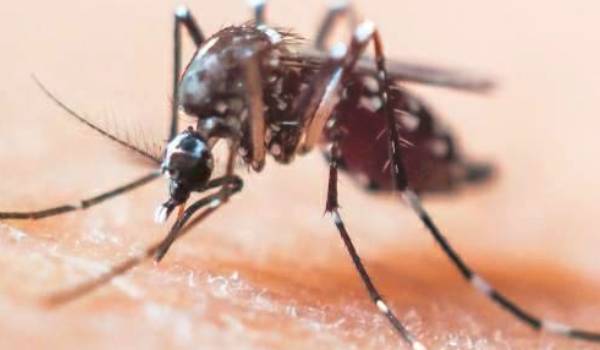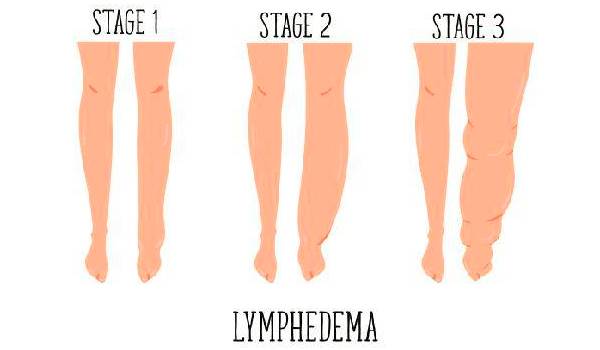Elephantomycosis – My leg weighs as much as my body
Elephantomycosis is one of the most prevalent diseases in tropical and hot tropical regions, and these regions include the countries of Central Africa, the Caribbean islands, Southeast Asian countries, and India. If your next travel destination is to one of these countries; It will interest you to read this article. According to the statistics of the World Health Organization in 2000, the number of people infected with elephantiasis reached 120 million, including 40 million people who were completely disabled and deformed.
What is elephantiasis? How is it transmitted to humans? And does he have a cure? What are the ways to live with elephantiasis? What are the necessary precautions if I travel to areas where elephantiasis is common? All this and more we will answer in this article.
What is elephantiasis?
Lymphatic filariasis is known medically as lymphatic filariasis, and it is classified among the neglected tropical diseases that spread in tropical and hot tropical regions. One-third of infected people are concentrated in India, the second third in Africa, and the other is distributed to other regions.
Where a person is infected as a result of a parasitic infection that affects the performance of the lymphatic system, so the lymphatic vessels swell in the extremities of the legs or arms, and the swelling may extend to the breast and external genitalia, and it usually affects a person at a young age.
It is called elephantiasis due to the appearance of the leg or arm of the affected person, as it swells and the skin becomes dry and dark in color, like the feet of an elephant.
What are the modes of transmission of elephantiasis?

Elephantomyelia is an infectious parasitic disease, in which infection occurs by filarial parasites – classified as roundworms (Nematodes- roundworms) – and is transmitted by mosquitoes from one person to another.
Where the mosquito carrying these parasites bites the human skin, and the mature filarial parasites penetrate the body to the lymphatic vessels, producing millions of small larvae for a period of 6-8 years and swimming with blood, and thus the lymphatic system attacks them as a defense of the body, so the fluids collect inside the lymph vessels causing chronic swelling mostly in the lower extremities .
Inflation appears in stages that last for years, and the affected person can reach complete disability and death if it is not treated.
What are the symptoms of elephantiasis?
As we mentioned before – dear reader – the symptoms of elephantiasis appear in stages that last for years, and include several stages starting from the bite of a mosquito to the human skin, and itching and redness may occur at the site of the bite and sometimes it is not noticed by the infected person; Therefore, it is called the asymptomatic stage.
After about six months from the date of infection, symptoms of lymphatic edema begin to appear, including:
- Swelling of the extremities, such as legs or arms.
- High body temperature.
- chills (shiver).
- Swelling of the man’s genitals, the scrotum enlarges with severe pain.
- Swelling of women’s external genitalia, such as the vulva and breasts.
And the symptoms continue to develop until they reach the shape of an elephant’s foot after about a year, and the skin becomes dry, ulcerated, thick and dark in color, with a feeling of severe pain in the swollen limbs.

How to diagnose elephantiasis
Diagnosing elephantiasis is not easy. Therefore, the doctor depends on the physical examination and the detailed medical history of the patient, especially if he recently traveled to a tropical region.
A blood test can be performed to detect filarial parasites (small larvae), which is the strongest evidence of elephantiasis or lymphatic filariasis, as a blood sample is drawn from the patient at night; Because filarial parasites are active at night.
With the scientific development, new tests have been developed to detect antigens of the parasite in the blood at any time, and this test is called (Card Test).
The earlier the infection with filarial parasites is detected, the less chance the patient’s condition will deteriorate, and it will be possible to live with the disease without hindering him from performing his work and meeting his essential needs.
What is the treatment for elephantiasis and ways to live with it?
The treatment of elephantiasis includes several stages depending on the appearance of symptoms or not, and with the realization of the fact that the development of symptoms continues for years to reach the shape of an elephant’s foot, which draws our attention to the need to start treatment early; To avoid serious complications of the disease.
1- Infection stage without symptoms
These include people newly infected with lymphatic filariasis without symptoms; Which draws attention to the fact that the aim of the treatment is to kill the mature filarial parasites that remain in the lymph nodes before they destroy them and massive inflation occurs in one of the limbs.
Treatment depends on anti-parasitic drugs such as: diethylcarbamazine (DEC), albendazole, or ivermectin.
Where the drug (Diethylcarbamazine (DEC)) is the first choice for treating patients at that stage, and the doctor gives it in a specific dose once a year for a period of 4-6 years, either as a single dose for a day only or over a period of 12 days, and there is no difference between the two methods. In effect on filarial parasites.
Side effects of (Diethylcarbamazine (DEC)) may appear, but they can be avoided, such as dizziness, tendency to vomit, high temperature, sometimes headache, or muscle or joint pain.
It is normal for any drug to have side effects, which differ from person to person and may not appear with all patients. So in the event that any symptom appears – it seems to you different from the symptoms of the disease – talk to your doctor or the nearest pharmacist to you.
While Ivermectin comes as a first choice in case the drug (Diethylcarbamazine (DEC)) conflicts with the patient.
2- The stage of hypertrophy of the limbs
Treatment in the stage of enlarged limbs aims to prevent the worsening of the condition of the enlarged organ, so that it does not reach complete disability, and not all patients are prescribed medications at that stage. Rather, it depends on whether the mature filarial parasites are still alive in the lymphatic system or not?
If mature filarial parasites are still alive in the lymphatic system:
The doctor prescribes two types of anti-parasitic drugs together, in addition to antibiotics (such as doxycycline) to eliminate the mature parasites, in addition to paying attention to personal hygiene – especially for the enlarged member – and extreme home care and practicing special exercises determined by the doctor.
Daily care of the enlarged member includes:
- Gently wash the inflated tip with soap and water daily.
- The skin is constantly moisturized; to avoid blistering.
- raising the foot or leg slightly off the ground; To reduce pressure and facilitate the flow of lymphatic fluid.
- constantly disinfect wounds; To prevent secondary bacterial infection as a result of weak body immunity.
- Doing special exercises prescribed by the doctor.
- Wrap the enlarged limb well with a bandage or a drink, the type of which the doctor determines; So that inflation does not get worse.
- Providing psychosocial support to the patient; Because he suffers from psychological pain and a sense of social rejection; Because of his inability and inability to perform his basic needs and earn a living.
While the patient resorts to surgery in very late cases, which do not respond to treatment, such as fluid accumulation in the scrotal sac – a hydrocele – or complete damage to the lymphatic tissue.
What are the complications of infection with elephantiasis?
Complete disability
which occur as a result of the great damage caused by filarial parasites to the lymphatic vessels; The size of the organ doubles its normal size, and ulcers and wounds multiply, and thus hinder the patient from performing his work and fulfilling his needs, which affects the patient’s psyche, and sometimes reaches the point of depression and anxiety.
Weakened body immunity
As we mentioned before, the destruction of filarial parasites of the function of the lymphatic system makes the body unable to cope with any bacterial or parasitic infection, and creates a fertile environment for the growth of bacteria and fungi in the ulcers and wounds of the enlarged organ, some of which are dangerous and may cause death.
What are the ways to prevent elephantiasis?
The only way to prevent elephantiasis is Reduce exposure to bites mosquitoesIf you are visiting or living in hot tropical areas – where filarial parasites are endemic, you must take precaution and beware of mosquito bites, by:
- Sleeping under a mosquito net (every bed).
- Wear long clothes that cover arms and legs.
- Use a mosquito repellent, such as spray or liquid.
There is no preventive medicine to prevent lymphatic filariasis, but by following the previous instructions, we can avoid the risk of infection. According to CDC statistics, visitors to the tropics for a short period are less at risk of infection.
Conclusion
Elephant disease or lymphatic filariasis spreads in tropical and hot tropical regions, and is transmitted from one person to another by mosquitoes, where the disease continues to develop in stages that extend from 5-7 years, in which the adult worms of filarial parasites remain in the lymphatic system, and result in severe infections of the lymph nodes that occur Swelling of the outer extremities.
It is possible to live with the disease through treatment, home care and psychological support, while the outer extremities of the body swell up to the shape of an elephant’s foot in the event of a delay in diagnosis or neglect of treatment.
In conclusion, dear reader…
It should be noted that the information received about elephantiasis is for the sake of medical knowledge, and it does not mean that you should consult your attending physician in the event that similar symptoms appear, and take the test for elephantiasis in endemic disease centers.

